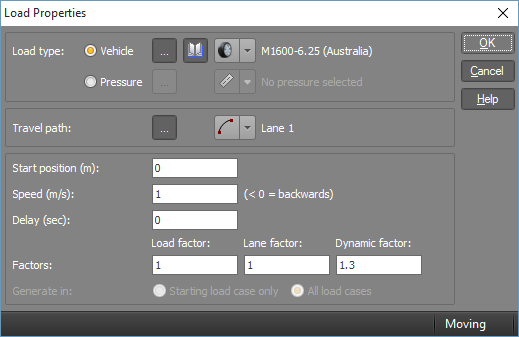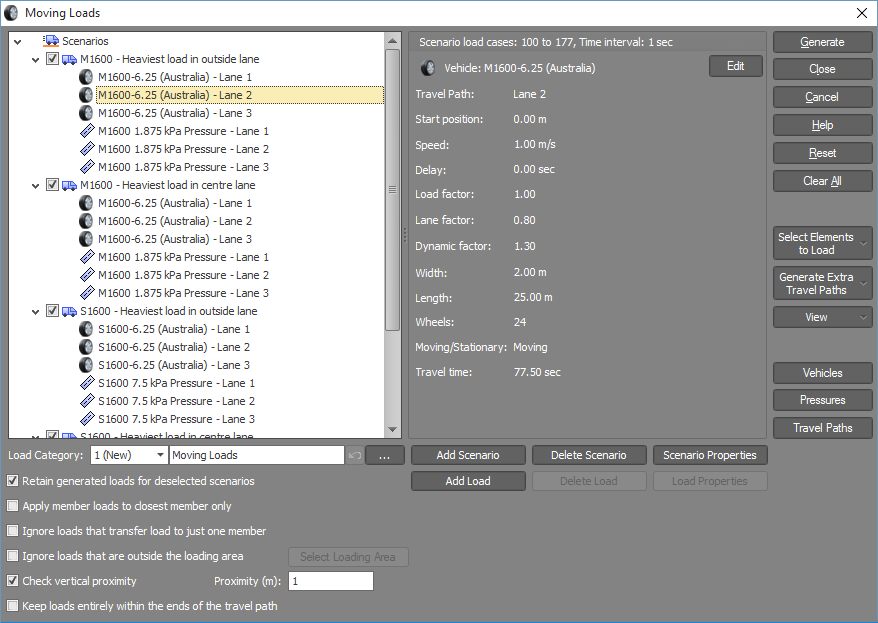Moving load data
The moving loads tool generates loads on nodes, members and plates subjected to moving or stationary loads such as vehicles, cranes or conveyors.

Features include:
- Loads can be moving or stationary.
- Load sources can be wheeled vehicles such as trucks or cranes, or distributed loads such as pressure patches or line loads.
- Multiple scenarios allow you to model any combinations of moving and stationary loads.
- Moving loads can be combined with other static loads.
- A lane generation tool is included for roads and bridges.
- Travel paths and lanes can have multiple segments, including curved segments.
- Loads can be generated on nodes, members and plates.
- Libraries of standard vehicles are included for various countries.
- Loads can share common travel paths or lanes.
- A speed, delay and start position can be specified for each load.
- Load factors, lane factors and dynamic load allowances can be specified.
- A loading area can be defined so that loads which move outside of it become inactive.
- A vertical proximity setting enables independent generation of loads on multi-level roadways.
- Moving load data can be exported to MS-Excel, MS-Word or a text file.
- Moving load data can be imported from MS-Excel or a text file.
- An animated display allows you to view your loads moving along the structure.
For full details refer to "Moving loads".
